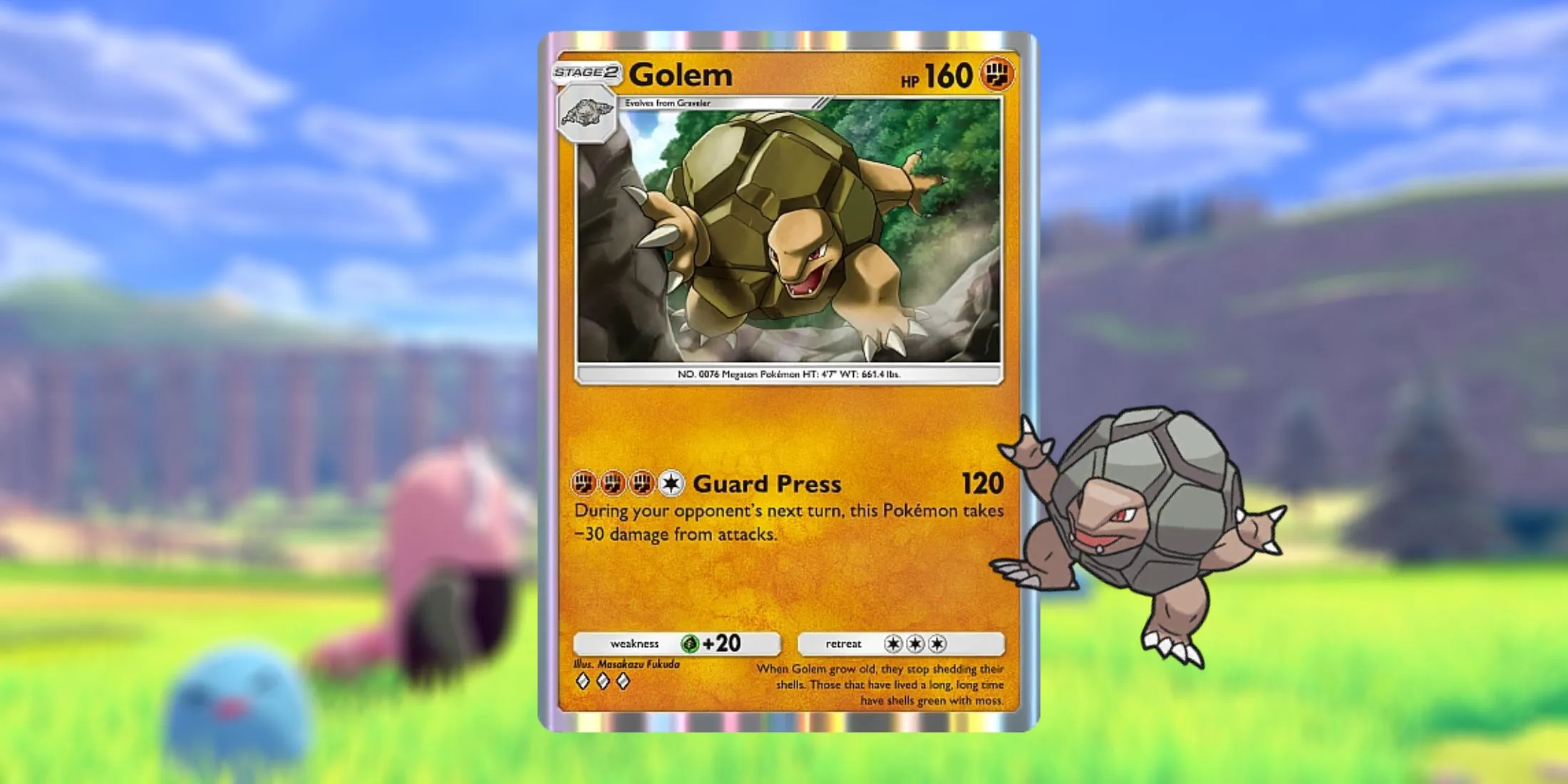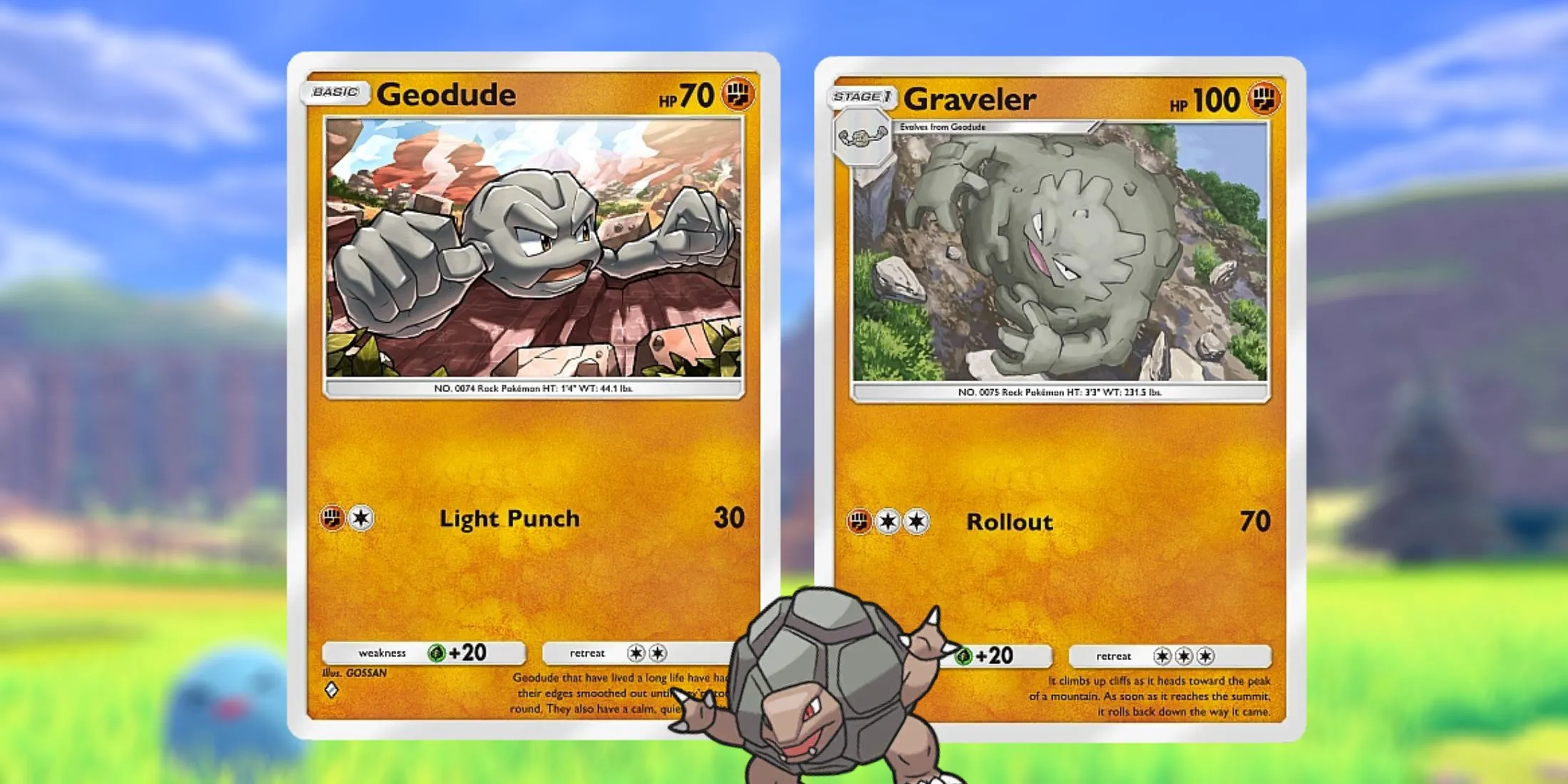
The advent of the Mythical Island Booster Pack in Pokémon TCG Pocket has revolutionized deck-building options for players, notably with the introduction of an enhanced Golem card. This latest iteration distinguishes itself through its consistency and the elimination of self-damage effects, which many players view as a significant improvement. The allure of experimenting with this Fighting-type deck is likely to reinvigorate player interest, providing new strategies and avenues for success in matches.
Previously, players had access to formidable Fighting-type cards like Marowak ex, albeit with a limited selection. The new booster pack expands these choices, showcasing the game’s evolution just like the Pokémon within it. The updated Golem deck capitalizes on Golem’s substantial HP and damage potential, allowing players to unleash powerful attacks while utilizing cards that facilitate Energy acquisition.
Golem Deck Cards List
Deck Suggestions, Substitutions & Other Cards to Consider

Determining the “best”version of a Golem deck largely depends on individual goals and play styles. For those aiming to construct a standout Golem deck, several critical factors should be considered. The game provides a baseline example of a successful Golem deck designed for solo matches, which serves as a solid foundation. However, personal experimentation is encouraged to discover what configurations yield the best results.
| Card Name | Type | HP | Ability (Energy Cost) | Quantity | Booster Pack |
|---|---|---|---|---|---|
| Geodude #147 | Basic Fighting Pokémon | 70 | Tackle (1) – 20 Damage | 2x | Genetic Apex – Pikachu |
| Graveler #44 | Stage 1 Fighting Pokémon | 100 | Lunge Out (2) – 40 Damage | 2x | Mythical Island |
| Golem #45 | Stage 2 Fighting Pokémon | 120 | Guard Press (4) – 120 Damage; During your opponent’s next turn, this Pokémon takes -30 damage from attacks. | 2x | Mythical Island |
| Marshadow #47 | Basic Fighting Pokémon | 80 | Revenge (2) – 40+ Damage; If any of your Pokémon were Knocked Out by damage from an attack during your opponent’s last turn, this attack does 60 more damage. | 2x | Mythical Island |
| Druddigon #56 | Basic Dragon Pokémon | 90 | Rough Skin: If this Pokémon is in the Active Spot and is damaged by an attack from your opponent’s Pokémon, do 20 damage to the Attacking Pokémon. | 2x | Mythical Island |
| Professor’s Research #7 | Trainer/Supporter | – | Draw 2 cards. | 2x | Promo-A |
| Poke Ball #5 | Trainer/Item | – | Put 1 random Basic Pokémon from your deck into your hand. | 2x | Promo-A |
| Potion #1 | Trainer/Item | – | Heal 20 damage from 1 of your Pokémon. | 2x | Promo-A |
| Leaf #68 | Trainer/Supporter | – | During this turn, the Retreat Cost of your Active Pokémon is 2 less. | 2x | Mythical Island |
| Brock #224 | Trainer/Supporter | – | Take a Fighting Energy from your Energy Zone and attach it to Golem or Onix. | 2x | Genetic Apex – Pikachu |
Since many of these cards are relatively new, some players might not have access to all of them. For those still awaiting specific cards, consider the following substitutes:
- Hitmonlee #154
- Mankey #141
- Sandshrew/Sandslash #137/138
- Diglett/Dugtrio #139/140
While Druddigon serves the purpose of stalling, it may disrupt the Energy management of your deck. Multi-Energy-type decks can often feel inconsistent, especially compared to the physical TCG. This version of Golem requires 3 Fighting Energy and just 1 Neutral Energy, making its preparation for attacks a potential challenge.
Additionally, Graveler offers both a Genetic Apex and Mythical Island version, with either typically performing well. Players can choose the version they currently possess or mix them if unsure of their preferences.
Removing Druddigon may also allow for the removal of Leaf, both of which could be replaced by alternative high HP Pokémon or supportive cards that enhance deck synergy. Players are encouraged to experiment with and without Druddigon to assess which configuration yields optimal results.
Best Strategy to Win with a Golem Deck
Getting the Energy You Need to Fight



The deck notably lacks ex Pokémon, allowing for some leniency in losing a few Pokémon while striving to bring Golem into play. Golem has quickly emerged as one of the premier cards in Pokémon TCG Pocket thanks to its ability to deliver substantial damage and diminish the attack values of opponents. Several Pokémon within the deck, particularly Druddigon, are capable of absorbing hits, providing valuable buffer time for Golem’s entry.
Druddigon’s advantage lies in its lack of weakness as a Dragon-type, making it a challenging target for opponents. Consequently, avoid attaching Energy to Druddigon; instead, position it as an Active Pokémon to chip away at your opponent’s forces while you prepare Golem for battle.
While Druddigon excels at stalling, it can complicate Energy distribution, where Brock plays a critical role by enabling Energy attachment to Golem without requiring additional resources. If necessary, Leaf can assist in switching Druddigon off the Active Spot, especially in situations where Energy is sparse.
Players should remain cautious against Grass-type decks, as they pose a specific vulnerability. Speed is crucial; aim to deploy evolutions rapidly to maximize Golem’s potential. The ultimate objective is to stall long enough for Golem to prepare for a heavy-hitting onslaught, paving your path to victory in Pokémon TCG Pocket.




Leave a Reply